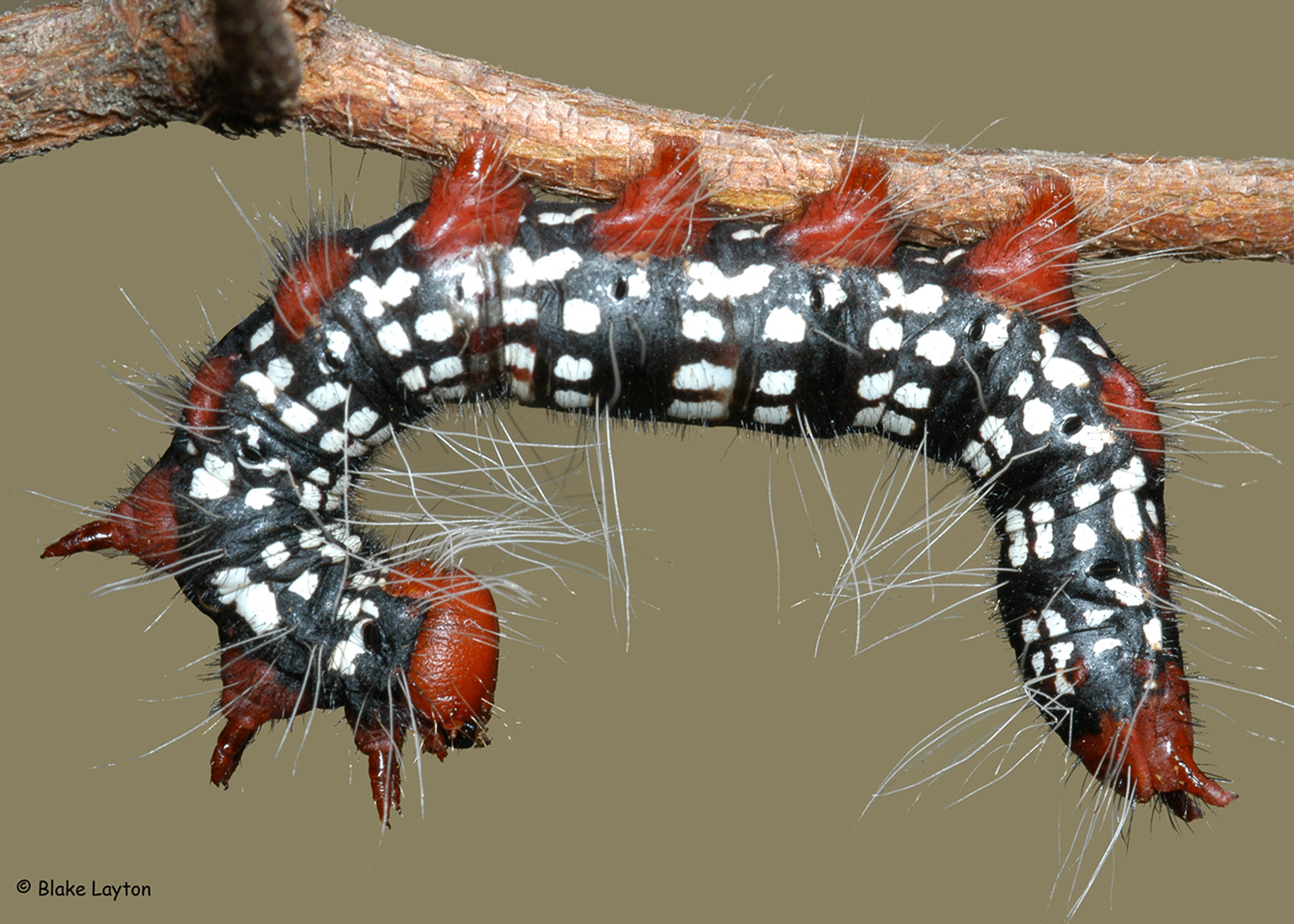Bug's Eye View, Azalea Leaf Caterpillar, Vol. 4, No. 23
Related News
June 17, 2015
June 4, 2015
May 19, 2015

Order: Lepidoptera
Family: Notodontidae
“We were in the backyard all weekend and the azaleas looked fine, but when I went out Tuesday afternoon most of the leaves were gone and these big black and white caterpillars were crawling all over the yard!” Like most caterpillars, azalea caterpillars do 80 to 90% of their feeding in the last two or three days before pupation. This is why severe caterpillar-induced defoliation can seem to appear almost overnight. Young, newly hatched caterpillars usually go unnoticed because they are not eating very much. Often, by the time caterpillar infestations are noticed, it is too late to treat in time to prevent damage. Once they have eaten all they are going to eat and are getting ready to pupate, many caterpillars enter a wandering phase and crawl away from the plants on which they had been feeding, and this is often when they are first noticed.
As the name suggests, azalea leaf caterpillars feed primarily on azaleas, but they also occasionally defoliate blueberries, which are in the same plant family as azaleas. Moths lay their eggs in masses and newly hatched caterpillars feed together, causing leaves to be skeletonized. Their appearance changes considerably as the caterpillars grow. Young caterpillars have red and yellow longitudinal stripes, while mature caterpillars are around two inches long and are black with yellow or white markings and red heads. There are one or two generations per year, with infestations occurring from July through October.
Control: Watch for early signs of caterpillar infestation and treat before heavy damage occurs. Products containing spinosad (FertiLome, Greenlight, Bonide, and Monterey all sell this) will do a good job of controlling small caterpillars. Acephate (Bonide Systemic Insect Killer) is an effective systemic insecticide spray. Because it also controls azalea lace bugs, acephate is a great choice for treating azaleas, butdo not use acephate on blueberries or other edible crops.
Blake Layton, Extension Entomology Specialist, Mississippi State University Extension Service.
The information given here is for educational purposes only. Always read and follow current label directions. Specific commercial products are mentioned as examples only and reference to specific products or trade names is made with the understanding that no discrimination is intended to other products that may also be suitable and appropriately labeled.